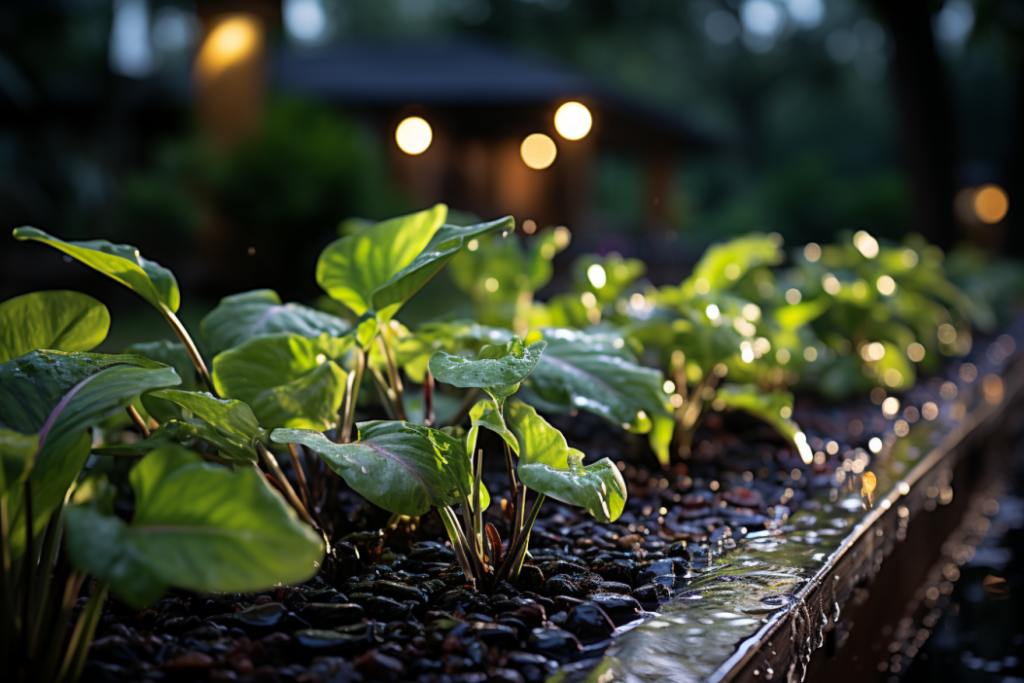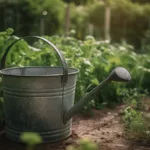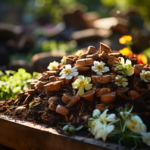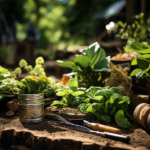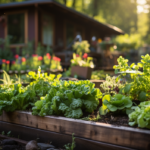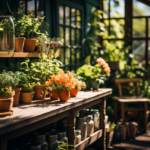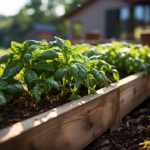Table of Contents
Hey there, fellow gardeners! As you know, watering your kitchen garden can be time-consuming and tedious. But with proper irrigation systems, you can save time and water while ensuring your crops thrive. That’s why we’ve put together the ultimate guide to kitchen garden irrigation systems. We’ll cover everything from drip irrigation to sprinkler systems, so you can choose the one that works best for your garden. Plus, we’ll offer tips on how to maintain your system and troubleshoot common problems. With our guide, you’ll have lush, healthy plants and a bountiful harvest in no time. So let’s get started!
The Importance of Proper Irrigation for Your Kitchen Garden
When it comes to growing a successful kitchen garden, proper irrigation is essential. In fact, it can mean the difference between a bountiful harvest and a disappointing one. Here are a few reasons why proper irrigation is so important:
Water Conservation
One of the main benefits of using a proper irrigation system is water conservation. Traditional watering methods, such as using a hose or watering can, can often waste a significant amount of water. An irrigation system, on the other hand, is designed to deliver water directly to the roots of your plants, minimizing waste.
Consistent Moisture
Proper irrigation ensures that your plants receive a consistent level of moisture, which is essential for their growth and vitality. When plants receive too little water, they can become wilted and sickly. On the other hand, when they receive too much water, their roots can become waterlogged, which can lead to rot and disease.
Efficient Use of Time
Proper irrigation can also save you a significant amount of time. Rather than spending hours every day watering your plants by hand, an irrigation system allows you to set it and forget it. This gives you more time to focus on other aspects of your garden, such as weeding or harvesting your crops.
More Bountiful Harvest
Finally, proper irrigation can lead to a more bountiful harvest. When your plants receive the proper level of moisture, they are better equipped to produce healthy, robust crops. This means more fresh produce for you and your family to enjoy.
In conclusion, proper irrigation is critical for the success of your kitchen garden. Not only does it conserve water and save you time, but it also ensures that your plants receive the consistent moisture they need to thrive. In the following sections of this guide, we’ll explore the different types of irrigation systems available and how to choose the right one for your garden. So stay tuned!
Different Types of Irrigation Systems for Your Garden
When it comes to irrigating your kitchen garden, there are several different systems to choose from. Each system has its benefits and drawbacks, but by understanding the features of each one, you can choose the one that best fits your garden’s needs.
- Drip Irrigation
- Sprinkler Irrigation
Sprinkler systems are easy to install and have the added benefit of cooling the air around the plants, reducing heat stress. However, watering plants from above can lead to water waste due to evaporation and runoff.
- Soaker Hoses
- Manual Watering
Manual watering, such as with a watering can or hose, is the simplest form of irrigation and can be the most effective way to water small gardens. However, manual watering requires more time and effort than automated systems and can be challenging to maintain a consistent watering schedule.
Drip irrigation systems are a popular choice for gardeners because they provide controlled doses of water directly to the roots of each plant. These systems are ideal for areas with water restrictions because they use less water than conventional watering methods.
Soaker hoses are a low-cost option that delivers water directly to the root zone, much like drip irrigation. These hoses often come in long, flat strips that can be placed next to rows of plants. Because the hoses are porous, they water plants at the roots, reducing water waste.
By choosing the right irrigation system for your garden, you can save time and water while ensuring your plants stay healthy and productive. In the next part of our ultimate guide to kitchen garden irrigation systems, we’ll cover how to install and maintain your chosen system, so stay tuned!
How to Choose the Right Irrigation System for Your Garden
Choosing the right irrigation system for your garden can be a daunting task, especially if you’re new to gardening. But selecting the right system is crucial to the health and growth of your plants. Here are some factors you should consider when choosing an irrigation system for your kitchen garden:
- Garden Size
The size of your garden is a major factor that determines the type of irrigation system you would need. If your garden is small, you can use a simple watering can or hosepipe to get the job done. On the other hand, if your garden is large, installing a drip irrigation or sprinkler system would be more efficient and practical.
- Soil Type
-
- Water Source
-
-
- Growth Stage of Plants
-
-
-
-
- Climate
-
-
-
-
-
-
- Regularly examine your irrigation system to identify clogs, leakage, or any damage. It’s perfect to do so for at least once a month.
-
-
-
-
-
-
-
- Clogs in filters obstruct water flow and raise system pressure, putting the system in danger of breaking down. So, clean the filters regularly.
-
-
-
-
-
-
-
- Keep your sprinkler heads clear of grass, weeds, and other debris. These can obstruct or prevent proper water flow.
-
-
-
-
-
-
-
- so that it will match the growth rate of new plants and maintain adequate watering to awning in old growth.
-
-
-
-
-
-
-
- The presence of any suspicion of leakage or damaged pipes in your irrigation system, test it to confirm its position, and resolve the problem virtually.
-
-
-
-
-
-
-
- Keep valves dry and ensure that they are tightly closed. Valves are vulnerable to corrosion due to moisture exposure.
-
-
-
-
-
-
-
- Spray heads and nozzles must be correctly screwed in and maintained well to avoid unexpected water pressure, over-spraying, or clogging of nozzles.
-
-
-
-
-
-
-
- When you identify a complex problem, it’s better that you seek advice from an Irrigation Expert, or a watering machine insulating company like Empowered Water Solutions LLC.
-
-
-
The type of soil in your garden also affects the type of irrigation system you should choose. Sandy soils, for example, tend to dry out quickly, while clay soils have poor drainage. Knowing your soil type can help you select an irrigation system that provides adequate moisture to your plants.
Your water source is another critical factor to consider when selecting an irrigation system. If you have a reliable water supply, you can use any irrigation system that best suits your garden. However, if your water source is limited, you might want to choose an irrigation system that conserves water, such as a drip irrigation system.
The growth stage of your plants also plays a role in selecting an irrigation system. Seedlings and young plants need more frequent watering than mature plants. Knowing the growth stage of your plants can help you adjust the type and frequency of irrigation to ensure healthy growth.
Lastly, you’ll need to consider your garden’s climate when selecting an irrigation system. If you live in a dry climate, a drip irrigation system may be most suitable, while a sprinkler system would work better in wetter areas.
In conclusion, selecting the right irrigation system for your kitchen garden requires careful consideration of these factors. By keeping these factors in mind, you can choose an irrigation system that best meets the specific needs of your garden.
Tips for Maintaining and Troubleshooting Your Irrigation System
Installing the right irrigation system for your garden is just the beginning. Proper maintenance of the system will ensure that it performs efficiently for years to come. And when issues arise, you’ll need to troubleshoot them quickly to prevent damage to your plants. Here are some tips for maintaining and troubleshooting your irrigation system:
Regular Inspection:
Clean the Filters:
Keep the Sprinkler Heads Clear:
Adjust Sprinkler Heads Periodically:
Check for Damaged Pipes or Leaks:
Keeping Valves Dry:
Proper Maintained Sprinkler Nozzles:
Consult an Expert:
Final thoughts,
Proper maintenance will keep your system performing at its best, and identifying problems early can save you time, money, and headaches. These tips should help you keep your irrigation system in top shape. But remember, it’s always best to consult professionals when you need help, even if it’s just to troubleshoot minor problems.
Conclusion
Congratulations! With this ultimate guide, you’re now well-equipped to create the perfect irrigation system for your kitchen garden. From choosing the right system to maintaining and troubleshooting it, the tips and tricks we’ve covered will help you save time and water while keeping your plants happy and healthy. Remember, every garden is unique, so take the time to find the solution that works best for you. With some practice and patience, you’ll soon be enjoying the fruits (and vegetables!) of your labor and impressing your friends and family with your green thumb. Good luck, and happy gardening!

